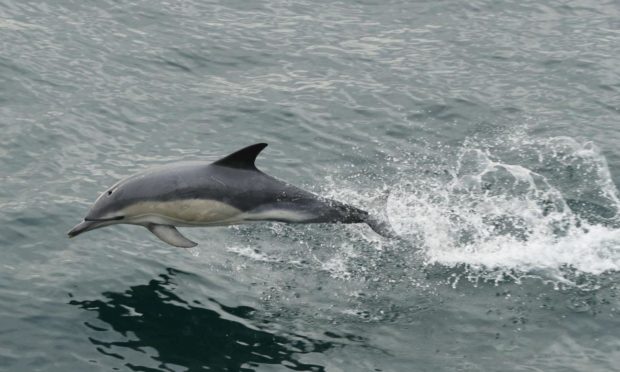A new study has shown that dolphins could be at risk due to man-made disturbances.
Human-caused disturbances such as shipping, tourism, coastal development and oil and gas exploration can negatively impact dolphins’ foraging opportunities.
Dolphins’ ability to catch food is reduced due to prey moving away from the foraging area. As a result, they may use more energy finding food or be forced into a fasting state.
Researchers from Aberdeen University, the National Marine Mammal Foundation (NMMF) and the Technical University of Denmark (DTU) studied the response in bottlenose dolphins when food is not available.
They discovered that the changes to the dolphins’ physiology differs from other terrestrial and marine mammals.
‘A diabetic-like state’
Over the past 50 million years dolphins have adapted to a diet of high fat and protein but that lacks carbohydrates.
Davina Derous, from Aberdeen University, said: “Dolphins have gone through huge changes in their physiology as they evolved to adapt to life in the oceans.
“One of these big changes is energy storage. To avoid getting cold, they adapted a thick layer of fat around their body which acts as an insulator. So there are constraints on dolphin energy budgets that are unique to the fact that they need to maintain this layer of fat to survive.
“Their diet is also really poor in sugars, and so the fundamental building block of animal metabolism – a sugar called glucose – is a rare commodity in their diet.”
Dorian Houser, from the NMMF, explained that when they stop eating dolphins appear to enter “a diabetic-like state”.
He added: “Typically, when terrestrial mammals stop eating, levels of blood sugar begin to drop and the body taps into its sugar reserves for energy. There is a gradual transition to the use of long-term energy stores, which are predominantly fat and to a lesser extent muscle.
“In dolphins however, blood sugar levels increase when they stop eating and they seem to move directly into a greater reliance on fat.”
The researchers believe that dolphins have adapted over the years to protect glucose and to start making sugar from fat and protein when fasting.
Tracking disturbances
The study also discovered that dolphins have a metabolic “fingerprint” in their blood that shows when they are not eating. Conservation physiologists could use this to determine when dolphin populations foraging has been interrupted by human activity.
Professor David Lusseau, from DTU Aqua, said: “We hope this study can help to inform when human activities are becoming conservation threats because of the disturbances they create.
“This study indicates that the way we thought foraging disruption would impact the life of dolphins did not capture the speed at which their bodies respond to a lack of food.
“It may be that conservation threats could emerge earlier than we thought.”










